As arguably America’s last remaining movie superstar, it’s hard to call any Tom Cruise movie a “surprise” hit, but Top Gun: Maverick has had surprisingly powerful legs in its second week at the box office. But much like the way they turned out en masse for Clint Eastwood’s American Sniper, American audiences are thrilled to finally see a military-themed movie that’s pro-America.
While it has its weaknesses, Top Gun: Maverick is superior to the original 1986 movie in many ways. I had never seen the original until last week, in order to get up to speed (pun intended) before watching the sequel on the big screen. Why didn’t I see it in the ‘80s? I think I was turned off by the MTV videos created to help sell it and the original middling reviews, such as this clip from Siskel & Ebert at the Movies:
Watching Top Gun on Netflix, I was reminded of its ‘80s production values; it plays like an extended MTV video, with erotic shots of F-14s that recall Dr. Strangelove’s opening credits, with a mating B-52 and tanker plane — but without the irony. The ‘80s music score, all Yamaha DX-7 synthesizers (then-the state of the art digital instrument), drum machines, and guitars through Scholz Rockmans also contribute to the Reagan-era feel. I didn’t care about the characters; the recent death of Ray Liotta reminded me that I cared far more about the gangsters and hit men of Goodfellas and Quentin Tarantino’s Pulp Fiction than daredevil American fighter pilots on the front lines of the Cold War because the writing and directing of the former movies were so good. The contrived Kelly McGillis subplot didn’t help matters, and by the end of Top Gun, I couldn’t help but think about Tarantino’s riff on the film in the 1994 film Sleep with Me (It’s Tarantino, so needless to say, language warning):
The seemingly tacked-on dogfight at the end of the original Top Gun, interrupting their graduation ceremony, also felt like the East German scenes at the end of Bill Murray’s Stripes played straight.
The Movie That Says We Are Truly Done With COVID-19
In contrast, Top Gun: Maverick is still a cartoon but…
When that first DX-7 bell note hits and the fighter planes appear in the sunrise, the sense of ‘80s nostalgia was palpable. Kyle Smith writes in his review that Top Gun: Maverick has “one of the most intriguing credits of the year — ‘Music by Harold Faltermeyer, Lady Gaga, and Hans Zimmer.’”
When the film begins, it takes time for the suspension of disbelief to build. How many 59-year-old Navy test pilots are flying the latest X-planes, own a P-51 Mustang (a plane worth at least $4.5 million), and, when they crash said test plane, get promoted to be a Top Gun instructor? But nobody goes to a Tom Cruise movie for realism. Instead, as Kyle Smith wrote in his profile of Cruise:
Cruise has made a few questionable career choices, but with the revival of the Top Gun franchise and the ongoing success of the Mission: Impossible series he willed into existence, he and the audience have made their peace. We don’t ask Tom Cruise to give us nuance or depth. We don’t want him to be tortured or complex. We just want to see Tom Cruise being completely awesome on the screen, and since what he loves most is to be completely awesome on the screen, Top Gun: Maverick is the ideal cultural landmark to announce that we are well and truly done with Covid. No movie released since the pandemic began has attracted so many grownups to the multiplex.
Much like the original Top Gun, Top Gun: Maverick is essentially a WWII movie with the latest technology onscreen. With Maverick training his pilots for what could be a near-suicide mission, it’s an ultra-high tech updating of films like The Dam Busters, 633 Squadron, and Twelve O’Clock High.
In the clip above, Siskel and Ebert noted that while the flying sequences in the original Top Gun were brilliant, the film dragged while the pilots were on the ground. A big reason why Top Gun: Maverick feels like an improvement over its predecessor is that Jennifer Connelly is a major upgrade to Kelly McGillis. As a struggling bar owner, Connelly’s character feels much more grounded in reality (again, for a movie that’s a sequel to Top Gun) than McGillis’s training school instructor character. And Cruise and Connelly have much more onscreen chemistry as well. Of course, both in the ‘80s Top Gun and the new Top Gun: Maverick, the female co-star is necessary to straighten out her headstrong co-star — otherwise, it wouldn’t be a Tom Cruise movie, as this hilarious segment by comedian Rich Hall highlights:
The Iceman Cometh
Back from the original Top Gun is Val Kilmer, and like Connelly, his scene does much to humanize Top Gun: Maverick. John Podhoretz writes in his review at the Washington Examiner that it’s surprisingly moving, given Kilmer’s real-life plight:
Iceman and Maverick sit across from each other. Kilmer is no longer the beautiful young man of Top Gun. His face is round and shows every day of his 62 years—in sharp contrast to the ageless Cruise, whose Dorian Gray painting must be the chief adornment of Scientology’s Sea Org headquarters.
Iceman types and words appear on a large computer screen: “I want to talk about work.”
Maverick confesses he doesn’t know how to handle the job he’s been handed, in part because he’s now supervising Rooster (Miles Teller), the resentful son of his late friend Goose. He had promised Goose’s mother to keep him from dying in a plane the way his father did, and he has interfered with Rooster’s career to protect his godson.
“It’s time to let go,” Iceman types. The two men look at each other. Not much else happens. Iceman says a few painful words, and cracks a joke about which of them is the better pilot. And then they hug. We are witnessing the passage of time, and time’s ravages, in a very real sense here.
And, dear God, am I crying? Am I crying during Top Gun: Maverick?
I am.
Faults in the movie? As with the original Top Gun, the enemy country is never named. Since Cruise also leads the Mission: Impossible franchise, couldn’t his writers invent a fictitious country like its old TV version used to do each week during the Peter Graves era? Similarly, Top Gun: Maverick’s pacing and thrilling cinematography combine to create the aforementioned willing suspension of disbelief. It was lost about three-quarters of the way in, when Cruise is reunited with his true love — an F-14 from the 1980s.
“I Make Movies for the Big Screen”
When the COVID pandemic hit, Cruise wisely fought for his film to appear on the big screen, and not as yet another product on the Paramount+ streaming platform:
Tom Cruise is currently in Cannes for the premiere of Top Gun: Maverick. When asked about if they almost put this movie on an app for a streaming premiere, Cruise has a pretty blunt answer: “That’s not going to happen. Ever.”
He doubled down on it, saying, “I make movies for the big screen.”
A very wise move, given the movie’s brilliant aerial scenes. Otherwise, it risked disappearing as yet another “memberberry” on a streaming service that’s obsessed with them, from the seemingly endless Star Trek reboots to The Offer, which turns The Godfather, one of the greatest films ever made, into a cross between a season of Mad Men and the Robert Evans documentary The Kid Stays in the Picture.
Many of Maverick’s incredible flying scenes were shot with the actors actually sitting in the rear seat of their Boeing F/A 18F Super Hornets with an IMAX camera specially modified to fit into the narrow confines of a fighter plane cockpit. Watching these shots on the big screen, there’s a definite heft to seeing real airplanes, really in the air with the actors in their cockpits. It made for quite a contrast to the last film I saw in a movie theater, the Christmastime hit, Spider-Man: No Way Home, which, while definitely enjoyable, was an endless CGI parade.
Full Taiwanese Jacket
Hollywood journalist Erich Schwartzel writes at Bari Weiss’s Substack, in a column headlined, “‘Top Gun’ Tells The Whole Story of China and Hollywood,” that one little touch that meant a lot to American audiences: the return of Maverick’s Taiwan mission patch on his iconic leather jacket:
It was early in Top Gun: Maverick when Pete “Maverick” Mitchell, played by Tom Cruise, slipped on his iconic bomber jacket—the same one he wore in the 1986 blockbuster about fighter jets, bromance and containing Communists. There—for the briefest of seconds—was the patch.
It was the patch of the Taiwanese flag that had first appeared in 1986, disappeared in 2019, and was now restored in 2022. The story of that patch is a microcosm of the entire relationship between the most powerful cultural industry in America and the world’s would-be hegemon.
* * * * * * * *
In Hollywood, the box-office receipts that once justified such self-censorship grew less reliable, with Chinese officials putting the kibosh on the release of blockbusters like Spider-Man: No Way Home—a casualty of rising diplomatic tensions between Washington and Beijing. By keeping the flags off the bomber jacket in Top Gun: Maverick, Paramount risked angering Americans in exchange for access to a market that it might not have wound up accessing. Tencent, the Chinese financier, quietly backed out of the film as Donald Trump’s fight with Xi Jinping was escalating, apparently worried that Beijing would punish it for supporting a brazenly pro-American movie. The uneasy courtship that had formed between Hollywood and China in the 1990s seemed to be heading toward an acrimonious divorce. China had used business from American movies to help it become the No. 1 box office in the world, and it didn’t need the U.S. anymore.
Can a patch on a leather jacket help coax American audiences back into theaters? Not alone of course, but its appearance sent another message that this wasn’t a film kowtowing to the CCP.
Conan, What is Best in Life?
Despite Tom Cruise making his share of anti-war movies over the decades, Top Gun: Maverick’s gung-ho attitude was never going to appeal to leftist film critics. Breitbart.com’s John Nolte collected the craziest of their reviews, in a column headlined, “Woketard Leftists Whine as ‘Top Gun’ Continues to Overperform:”
Here’s a sneer from Vanity Fair:
Aside from the Defense Department propaganda inherent to most of Hollywood’s military-themed creations, the film is not overtly political in a way that is recognizable to Americans who have grown accustomed to Air Force flyovers at the Super Bowl and World Series. In many regards, Top Gun: Maverick feels like a product of the ’80s—a decade that saw the U.S. invading countries like Grenada and Panama while also in the throes of the Cold War with Russia. And like the original 1986 movie, it is an exhilarating, beautifully produced military recruitment ad that favors neither Republican nor Democratic sensibilities. It manages to portray a conflict over nuclear weapons as downright fun.
[…]
Despite acknowledging that he had not seen the film, Breitbart columnist John Nolte preemptively lauded Top Gun: Maverick as a “masculine, pro-American, stridently non-woke blockbuster,” adding, “Rather than apologize for being an ’80s ‘relic,’ it embraced what everyone loved in 1986 and still loves today.” While citing a number of Hollywood’s “woke flops,” Nolte wrote that Top Gun: Maverick avoided that fate by “respect[ing] human nature” and eschewing progressive commentary. “It didn’t do what James Bond did—turn itself into a mewling little pajama boy gerbil of a movie,” he added. “It didn’t do what Star Wars did and pervert a romantic adventure series into a shrill Womyn’s Studies lecture.”
Damn, did I really write all that? Pretty snappy.
“What is Best in Life, Conan?” I wrote for the headline when I linked to Nolte’s column at Instapundit.
Finally, if the original Top Gun was a Hollywood look at the U.S. Navy’s fighter pilots during President Reagan’s “Morning in America,” is Top Gun: Maverick a preview of a robust America post-Biden? Perhaps then, it’s a yearning for a better future that is drawing audiences to the film as much as — maybe even more so — than the sense of nostalgia for the original film and the era in which it was made. At a minimum, it’s a terrific popcorn movie. Go see it in a movie theater — while you can still get popcorn.


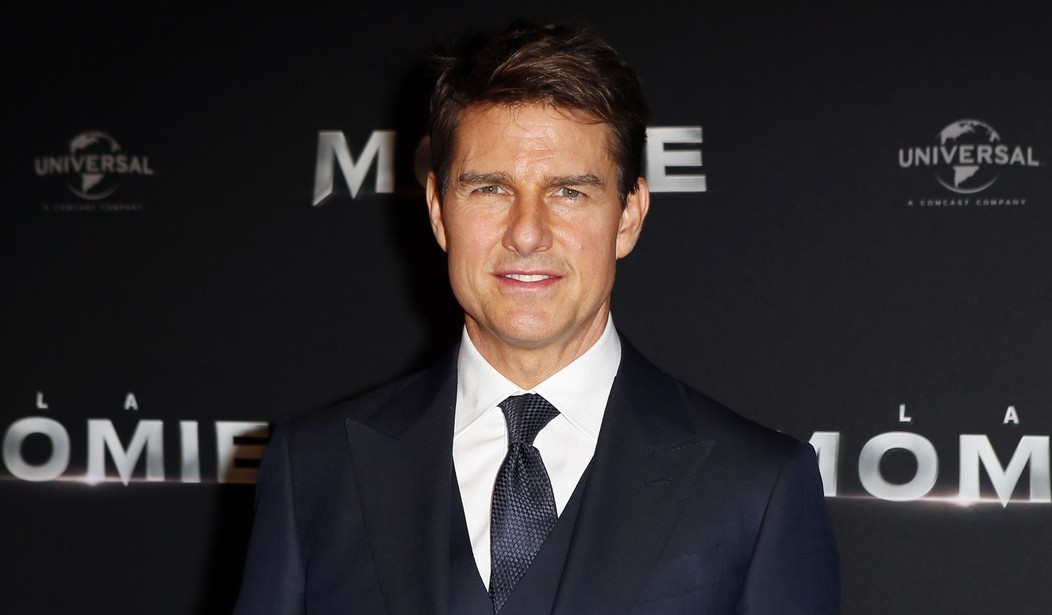


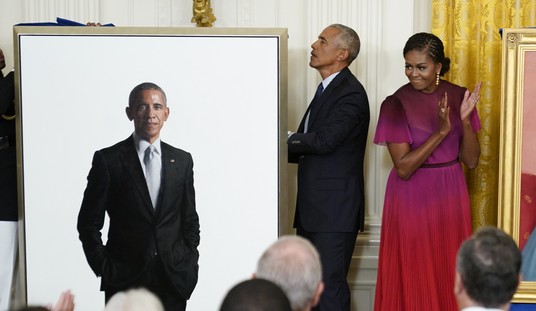
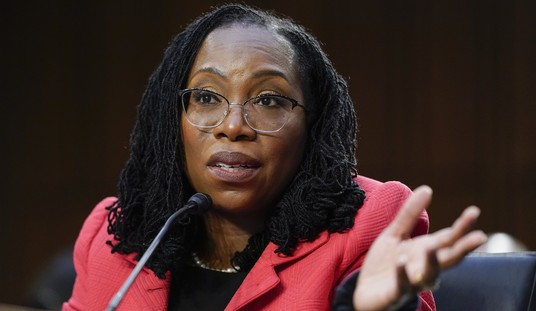

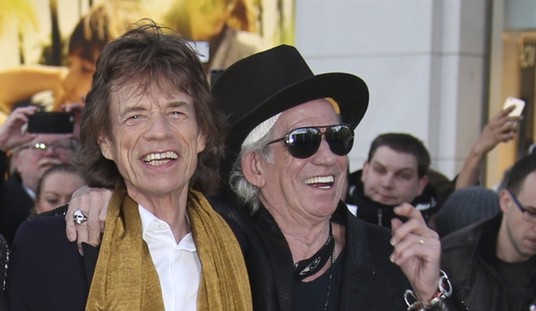
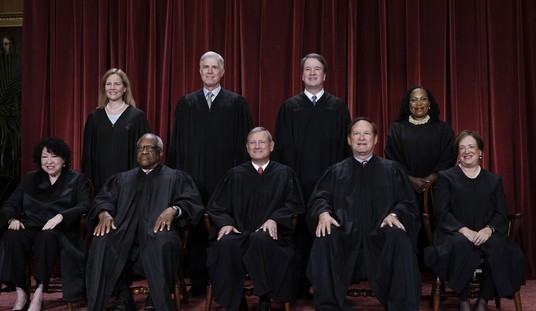
Join the conversation as a VIP Member